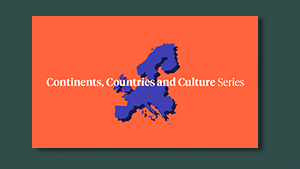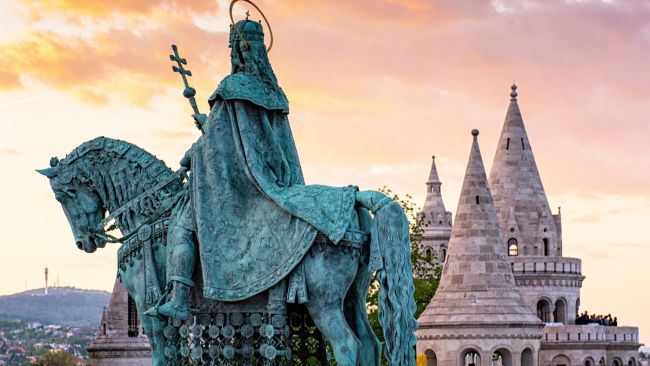Hungary Culture, Customs and Traditions

Hungary is a proud nation in Central Europe with a wealth of historical and cultural treasures stretching back to the 9th century. It is renowned for its stunning architecture. From the Hollókő village to the Tokaj wine region, several UNESCO World Heritage Sites within Hungary bear testament to millennia of influences from various empires and civilizations which have shaped this unique country. We explore more of Hungary’s culture, customs, and traditions below.
Hungary Population
The population of Hungary is estimated to be 10.1 million (October 2023), accounting for a mere 0.13% of the world’s total inhabitants. With an average density of 112 persons per square kilometer and a land area spanning 90,530 km2, it is no surprise that 68.3% of Hungarians are urban dwellers, with Budapest being its most populous city – home to 1,759,407 residents. Hungary’s second largest metropolitan center is Debrecen (204,124), followed by Miskolc (172,637).
Languages of Hungary
Hungary is home to the Uralic language, Hungarian, its official tongue. Unlike many other languages of this region, it has no close relatives; however, there are similarities between the language and Finnish and Estonian dialects. While most Hungarians only speak one language, ethnic minorities residing in Hungary often communicate with each other using German, Romanian, Slovakian, or Serbian as their primary form of expression. English also enjoys considerable popularity throughout the country – particularly amongst larger cities and well-known tourist destinations.
Religion in Hungary
In Hungary, religion is quite diverse, and many citizens do not identify with any particular faith. In the national census conducted in 2022, 42.5% identified as Christian – 29.2% Catholic, 9.8% Calvinist, 1.8% Lutheran, and 0.2% Eastern Orthodox Christianity. While another 1.5% belong to other denominations or affiliations such as agnosticism/atheism.
Family Life in Hungary
Family life in Hungary is traditionally built on solid family values and close relationships. While married couples with children are still the norm, single-parent families and unmarried couples raising kids have become increasingly common. Hungarians usually stay connected as a unit; they often get together for meals to share their experiences while providing help whenever necessary. Education plays a vital role within Hungarian households; parents typically take an active interest in their children’s education by signing them up for extracurricular activities or extra tutoring so that they can achieve academically.
Hungarian Art and Architecture
 Hungarian art and architecture have a long, varied history. Hungarian National Romanticism and Bauhaus styles defined its evolution through the centuries-long Romanesque to Renaissance era. These are embodied in iconic structures such as the Matthias Church of Budapest with its intricately carved stone and stained glass windows reminiscent of Gothic elements or Buda Castle’s distinct gothic influence. The Royal Palace also reflects Italian and German influences from when it was reconstructed after being destroyed during the 16th century – an age known as “Hungarian National Romanticism.”
Hungarian art and architecture have a long, varied history. Hungarian National Romanticism and Bauhaus styles defined its evolution through the centuries-long Romanesque to Renaissance era. These are embodied in iconic structures such as the Matthias Church of Budapest with its intricately carved stone and stained glass windows reminiscent of Gothic elements or Buda Castle’s distinct gothic influence. The Royal Palace also reflects Italian and German influences from when it was reconstructed after being destroyed during the 16th century – an age known as “Hungarian National Romanticism.”
In the 20th century, modernist movements gained traction, including the functionalist geometric forms advocated for through leaders such as Marcel Breuer and László Moholy-Nagy, while Imre Makovecz brought his organic spiritual approach to international recognition. Present-day works display contemporary trends yet maintain Hungary’s unique culture/history, and are showcased at galleries and museums throughout Budapest.
Hungarian Food
Hungarian food is renowned for its vibrant flavors, featuring paprika and other spices. A few of the most popular dishes are Goulash – a hearty beef-vegetable soup with plenty of paprika; Fisherman’s soup, a spicy fish stew seasoned with tomatoes and various types of fish; and stuffed cabbage – cabbage leaves filled to the brim with ground meat and rice. For dessert, Hungarians adore Dobos Cake – multiple layers of cake smothered in chocolate buttercream filling topped off by caramel glaze, or Somlói Galuska – an indulgent trifle composed of sponge cake, custard cream spiked with rum syrup and then finished off with a decadent chocolate sauce.
Hungarian Fashion
Hungarian fashion blends the classic with the contemporary, seamlessly combining traditional motifs such as intricate embroidery with modern cuts from eco-friendly materials. On festive occasions, Hungarians proudly showcase their nation’s iconic garments – infused with history and culture. In recent times, Hungarian designers have garnered global recognition for combining these traditional outfit elements into groundbreaking collections; Nanushka has achieved distinction through its minimalist styling, while Tipton offers superb leather products to perfect any ensemble.
Doing Business in Hungary
As a member of the European Union, doing business in Hungary offers many advantages – such as its low corporate tax rate and highly skilled workforce. Strategically located in Central Europe, it’s an ideal spot for companies seeking to expand into this region. Yet some obstacles can still cause headaches: bureaucratic red tape that often results in delays, corruption being unfortunately present, and local firms with close connections to government officials providing tough competition.
Hungarian Holidays and Celebrations
The most important holidays and celebrations in Hungary are listed below. Apart from these national holidays, Hungary also celebrates various cultural and religious festivals throughout the year, such as the Budapest Spring Festival, Budapest Wine Festival, Sziget Festival, and the Budapest Christmas Market.
- New Year’s Day (January 1)
- Revolution Day (March 15)
- Good Friday (dates vary)
- Easter Sunday (dates vary)
- Easter Monday (dates vary)
- Labor Day (May 1)
- Pentecost Sunday (observed on the 7th day of Easter)
- Ascension Day (Forty days after Easter – typically in May)
- Saint Stephen’s Day (August 20)
- National Day (October 23)
- All Saints Day (November 1)
- Christmas Day (December 25)
- Second Day of Christmas (December 26)
Common Hungarian Language Expressions
Learning Hungarian can be daunting, but its beauty and the rewards it offers make any effort more than worth it. This Uralic language is truly unique among European languages. The most common Hungarian language expressions are as follows:
- Hello: Jó napot kívánok
- Good morning: Jó reggelt
- Good night: Jó éjszakát
- Welcome: Üdvözlet
- Yes: Igen
- No: Nem
- How are you? Hogy van?
- What’s your name? Mi a neve?
- My name is… A nevem …
- Where are you from?
- I’m from: Hová valósi Ön?
- Pleased to meet you: Örülök, hogy megismertelek Örvendek
- Cheers: Kedves egészségére!
- Have a nice day: Szép napot!
- I don’t understand: Nem értem
- Do you speak English? Beszél angolul?
Translation for the Hungary Market
Partnering with GPI to translate your business or marketing materials into Hungarian is vital for entering the Hungary market. The language can be complex, as few Hungarians have fluency in English; however, professional translation will enable you to connect with more individuals and demonstrate commitment to that region’s economy. Additionally, translated content helps foster relationships between businesses and customers in the country – speaking their native tongue shows appreciation for their culture while demonstrating how seriously you take working together.
